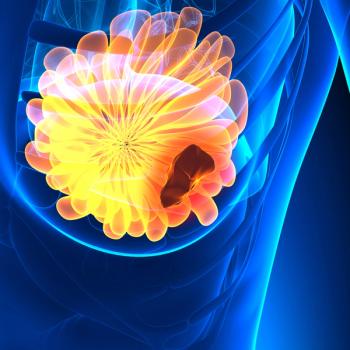
Phase 2 Data for Bipolar Androgen Therapy Plus Olaparib Shows Clinical Activity in CRPC
Notable declines in prostate-specific antigen levels were seen in patients with castration-resistant prostate cancer who received olaparib coupled with bipolar androgen therapy.
Results of a phase 2 trial that were presented during the
Almost half (47%) of patients had a PSA50 response, defined as a ≥50% decline in their PSA level. At a median follow-up of 22.7 months, the median progression-free survival (PFS) was 12.6 months.
“BAT plus olaparib is associated with high response rates and long PFS. Clinical benefit was observed regardless of homologous recombination repair (HRR) gene mutational status. Treatment was well tolerated, although caution should be taken in using this in men with a history of cardiovascular disease. Larger studies evaluating this regimen are warranted,” lead study author Michael Schweizer, MD, assistant professor, Division of Medical Oncology, University of Washington School of Medicine; associate professor, Clinical Research Division, Fred Hutchinson Cancer Research Center; and Physician, Seattle Cancer Care Alliance, and coinvestigators wrote in their abstract conclusion.
The single center (Fred Hutch) phase 2 study (NCT03516812), which officially launched on August 29, 2018, enrolled 36 patients (median age, 70 years; range, 51-88) with CRPC, as shown by PSA progression (PCWG3 criteria) and castrum serum testosterone level (≤50 mg/dL). Patients also had to have a PSA level that was ≤1 ng/ml and rising on 2 sequential measurements occurring ≥2 weeks apart. Prior abiraterone acetate (Zytiga) and/or enzalutamide (Xtandi) was required. Among 30 evaluable patients, 13 had prior abiraterone, 7 had prior enzalutamide, and 10 had received both.
Docetaxel in the hormone-sensitive prostate cancer setting was allowed; however, enrollment was prohibited for patients who received docetaxel for metastatic CRPC. Patients with cancer-related pain were also excluded from enrollment.
All patients received olaparib at 300 mg orally twice daily plus BAT. The BAT treatment consisted of 400 mg of testosterone enanthate or cypionate every 28 days while continuing androgen deprivation to suppress endogenous testosterone. The treatment cycles repeated every 28 days unless there was disease progression or unacceptable toxicity.
The primary end points were safety and the PSA50 response rate at a maximum of 12 weeks after starting treatment. The investigators officially measured the PSA50 end point in the entire study population; however, they also conducted an exploratory analysis of outcomes in patients stratified by HRR gene mutational status. The study required that at least half of the enrolled patients had ≥1 HRR gene alteration.
Secondary outcome measures included radiographic response rate, PSA progression rate, overall survival, radiographic PFS, and quality of life.
Among 30 evaluable patients, 14 (47%) reached a PSA50 response, including 7 of 15 patients harboring an HRR mutation and 7 of 15 patients without an HRR mutation. Of note, the median PFS was higher in the no HRR mutation group versus the HRR-mutated group at 14.8 versus 7.5 months (P = .015), respectively.
Regarding safety, 6 patients discontinued treatment early for a variety of reasons including progression (n = 2), nausea (n = 2), stroke (n = 1), and myocardial infarction (n = 1). There were 5 patients with grade ≥3 treatment-related adverse events (AEs). Among these AEs were 1 grade 4 stroke and 1 death of myocardial infarction. The study was eventually amended to exclude patients with a history of myocardial infarction and after that point, no further cardiovascular AEs were reported.
Olaparib was approved by the FDA in May 2020 for use as a single-agent in adult patients with deleterious or suspected deleterious germline or somatic HRR-mutated metastatic CRPC, who progressed following prior treatment with enzalutamide or abiraterone.
Reference
Schweizer M, Gulati R, Yezefski T, et al. Bipolar androgen therapy (BAT) plus olaparib in men with metastatic castration-resistant prostate cancer (mCRPC). Presented at: 2021 European Society for Medical Oncology Congress. September 16-21, 2021. Abstract 592P
Newsletter
Stay up to date on recent advances in the multidisciplinary approach to cancer.





















































































